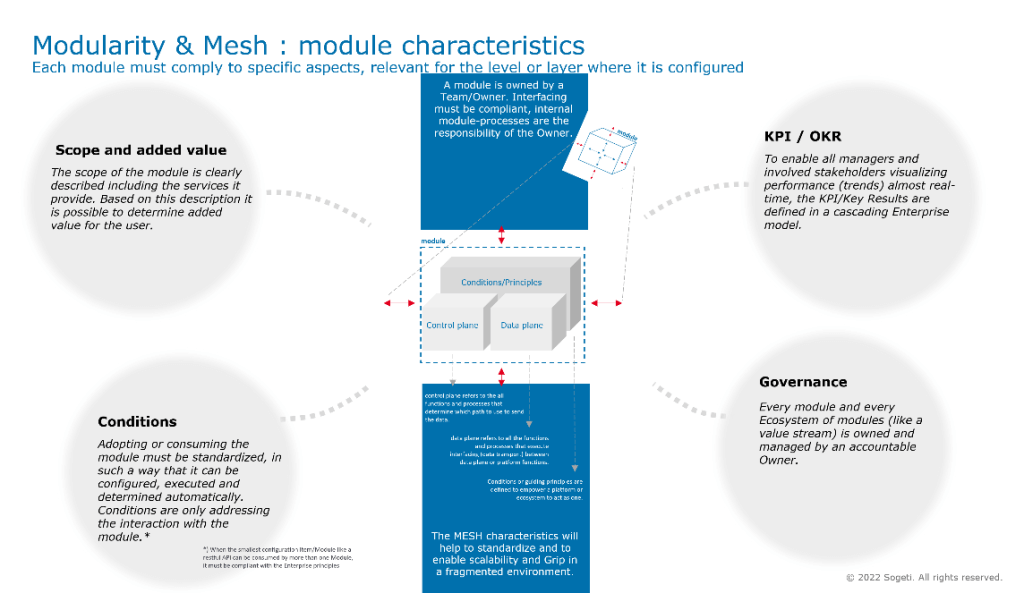In the past two years, many organizations have had to deal with unexpected and sudden situations. These are situations that give reason to take drastic measures, on the one hand, to secure the position of the organization in the market or even to keep the business healthy. Examples are the shortage of Chips, resulting in delivery problems in the automotive industry. Or the lockdown situations because of Covid19. The proponents of agile working and the forerunners in digitalization and data-driven business operations can probably cite examples of companies, which have benefited from these thanks to their forward-thinking strategy. Unfortunately, not everyone has that positive experience. The move to working agile and becoming data-driven has proven to be more complex and difficult than first expected.

In this blog, I share some lessons learned. Without intending to be exhaustive, I will discuss several aspects that deserve attention if an organization wants to get more and quicker returns from working agile.
Common situations
The situations below give an idea of the challenges that organizations face and where improvements are possible
- Public Cloud deception:
In contrast to the success stories of other organizations, the transition to the public Cloud is not yet perceived as successful. After adopting the public Cloud, it turns out to be difficult to control IT costs, let alone reduce them. In addition, the speed gain in the entire chain (from idea to working functionality) is disappointing.
- Standard ITIL processes:
There is only one standard set of ITIL processes, with little distinction for how the teams responsible for software delivery (agile or waterfall) work. However, to accommodate the agile teams, minor modifications have already been made.
- Agile Cowboys:
A (large) part of the IT organization is not yet familiar with agile working, resulting in misunderstandings and misunderstandings. Sometimes agile teams are referred to as cowboys. This may be justified if agile teams, without dialogue, move outside the agreed paths (processes).
- Agile coaches:
To take agile working in the organization to the next level, agile coaches are active. The focus of these coaches is often limited to implementing an agile framework such as SAFe, and the way of working within the teams.
- Standardization:
IT solutions seem to be getting more and more complex. The speed of innovation and the many possibilities are sometimes difficult to oversee. The lack of insight or even control gives rise to concerns regarding security and compliance. Standardization is an important tool and not always easy to achieve.
- Missing report-out standard:
Many reports are still based on a monthly frequency of reporting and run along existing processes. Sometimes even with a lot of manual operations in Excel. An unambiguous set of KPI’s, which are applied by the entire organization, is missing.
Essential coherence is missing
Experience shows that individually optimizing, among other things, the above phenomena, in stand-alone project form, does not produce the intended results. Many of the phenomena mentioned influence each other. It is therefore important to make the coherence between the various projects visible and to balance them. This can be done by also paying attention to the preconditions within the organization. For example, the implementation of an agile framework proves in practice to be insufficient to solve the bottlenecks and limitations experienced by agile teams. Examples of these bottlenecks and limitations are the need to conform to standard ITIL procedures, which makes the possible acceleration of processes and self-service impossible. It deserves attention that management approaches the ambition to innovate faster and become more flexible from a broader perspective.
In other words, which basic conditions are missing or are inadequately put in place to make improvement programs successful and to allow the organization to accelerate the transformation to agile working and data driven.
So, what are these basic conditions?
The conditions listed below together form the basis for the improvement programs, additional conditions may be named, but above all success depends on the right mutual balance in these conditions. By only realizing one or a few of these conditions we dampen the final effect, with the result that ambition and objectives are not realized as expected.
- Innovation facilitating infrastructure
Cloud technology provides a technical foundation to move quickly and flexibly with new innovations. However, only making the public Cloud (SaaS and Hyperscaler Platforms) available can work in the short term, and in the longer-term more is needed to stay in control. Determine what facilities and characteristics the infrastructure should have to enable and facilitate the desired innovation. (5 Digital Assets for Innovation-Ready Infrastructure (sogeti.com))
- BiModal (Gartner) approach:
Introduce an agile-focused set of (ITIL) processes and organize them alongside existing ITIL processes. Gartner calls this the BiModal approach. This approach has implications. Within the strategy frameworks and policies (security and compliance) the agile teams do get more freedoms and more responsibilities. (Definition of Bimodal – IT Glossary | Gartner)
- (Agile) team compliance and discipline:
The efficiency of an organization, or a value chain is partly determined by the cooperation of the agile teams involved. This means that the teams and the team members must adhere to the agreements and standards to enable that cooperation. In short, discipline and compliance. Where the agreements and controls are not workable, it is better to make that negotiable instead of ignoring the agreements. As an agile community you can, for example, make proposals for an unambiguous standard approach for the organization. (For inspiration: DevOps services & oplossingen | Sogeti)

- DevOps operating model:
Agile working and DevOps are often linked and in practice there appear to be multiple operating models. These range from agile working in only the software development team (model A) to working fully DevOps and being responsible for maintaining and running functionality 24/7 by one team (model D). In the guidance of the teams and the organization of the preconditions, we must take this into account. (Securing Enterprise DevOps Environments | Sogeti) - Unambiguous KPI or OKR:
An unambiguous breakdown of the most important aspects to be managed in an organization makes it possible to define one set of KPIs or OKRs (Objectives and Key Results) for the entire organization. The rule here is: rather less KPI’s or OKR’s, than more. Once this is in place, we can increasingly steer on the basis of near real-time Dashboards and reports. (OKR Framework | Learn how to use the OKR Framework for laser-focused growth (okr-framework.com))
- Platform thinking:
Organizing value chains and sharing business functions, is an example of platform thinking. I believe that platform thinking can be introduced much more widely in organizations. For example, consider IT services that are used by multiple teams or are required for multiple applications, such as connectivity services, monitoring, managed container services, etc. Grouping these candidate ‘common’ services together creates certain function zones or platforms. Instead of a mandatory centralization with often many limitations, a platform-oriented approach allows for creativity and use according to need. (Definition of Platform (Digital Business) – IT Glossary | Gartner)
- MESH management
A basic question is how we are going to manage the complexity of fragmentation and increasing dynamics. MESH management, stemming from Service Mesh, is a still underappreciated solution. This, even though the Hyperscaler platforms use it and technology like Kubernetes is entirely based on it. Analyzing the MESH management fundament, we recognize three basic characteristics:- Control plane: how to control all processes and flows within a component (service, or platform), internal policies and configuration
- Data plane: organizing all the tasks within a component (service or platform) like authentication, authorization, health checking etc.
- Connectivity conditions: how to connect with the component, what is the required input, what is the expected output, performance etc.

Concluding
Agile working is now seen within organizations as a way of working to innovate faster and more flexibly. Many organizations seem to focus on implementing an agile framework and making the agile teams work more compliantly with the existing ITIL processes. This approach appears to lead to results if several other preconditions are also met. These preconditions should include the introduction of a BiModal working method, platform thinking and a uniform KPI or OKR reporting model for the entire organization. Adding MESH management, at all levels of the organization, as an additional precondition will help to accelerate successful achievement of your agile ambitions. Depending on the situation, one aspect may deserve more attention than another. Ultimately, the right balance is important to make the agile processes for the whole organization more successful and thus realize the acceleration. This approach affects the entire organization and to further digitize and become data-driven, involvement from all disciplines is a requirement.

 English | EN
English | EN 
